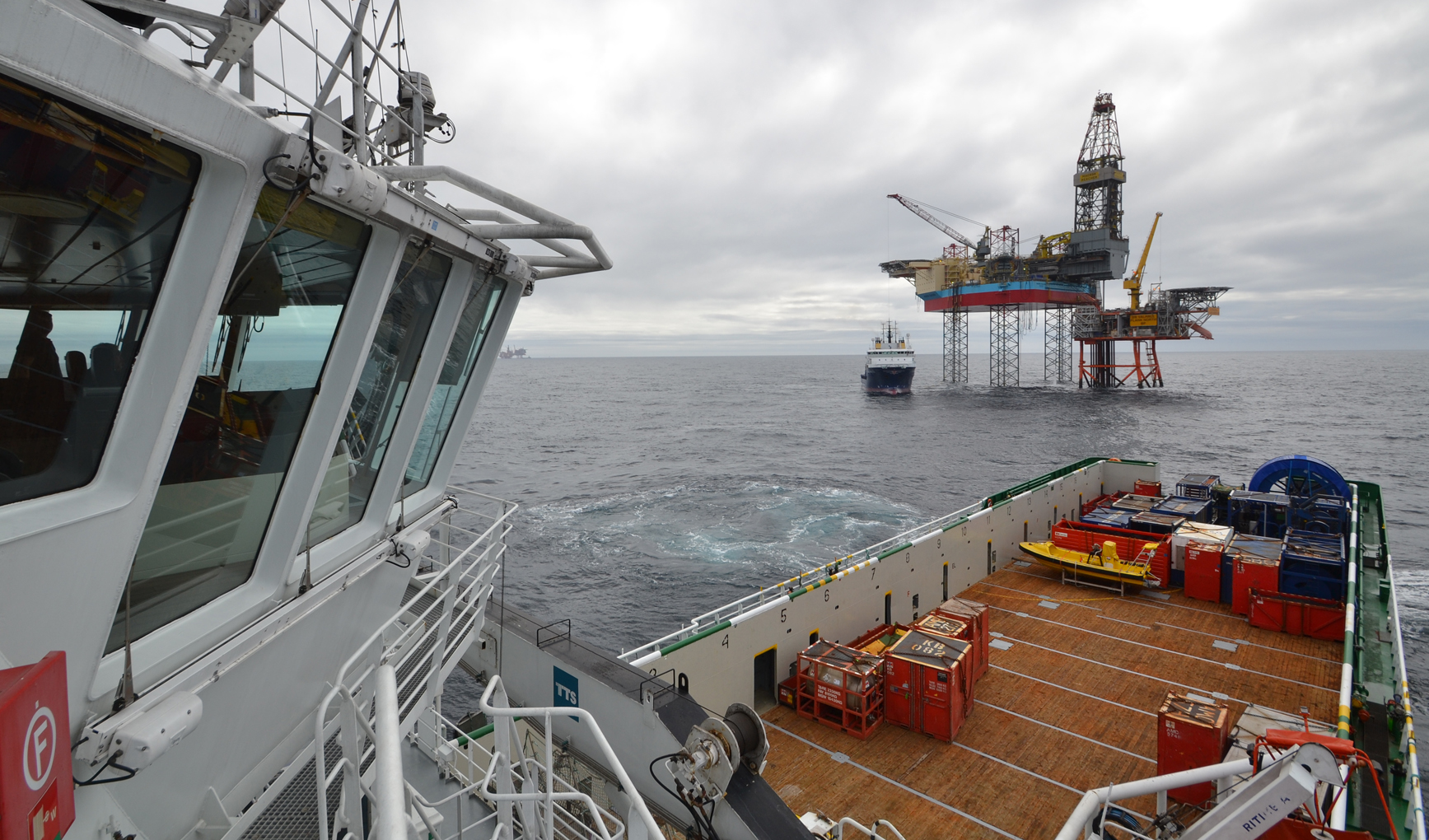
The offshore-energy market: expert insights on growth and trends

Some oil & gas experts predict continued steady growth in the market, while others are more cautious – partly because of current geopolitical uncertainties. Maritime operators in the sector are keen to predict the market’s direction and anticipate changes and challenges that will confront them. PartnerShip asked Todd Jensen, Senior Offshore Energy Market Analyst at Maritime Strategies International Ltd. (MSI) for his insights on market trends, vessel fleets, offshore-wind power and decarbonization.
PartnerShip: Can you quantify the evolution of the oil & gas market in the coming years?
Todd Jensen: The oil & gas market is currently experiencing strong activity, which is expected to continue through until at least 2027, with a large number of substantial EPC contracts awarded throughout 2023 and 2024. The market is seeing charter rates for OSVs start to plateau over the last couple of quarters, across all regions. However, I do expect to see further growth in charter rates, in the region of 5%, over the next couple of years, peaking in 2027. In terms of key regions, a lot of EPC contracts have been signed in South America and the Middle East, in particular. There are also several oil & gas discoveries in West Africa, which will be appraised and developed over the coming years. The Middle East has always been a strong region for activity, but South America, in particular Brazil, and West Africa are really the regions that will drive increase in demand and oil supply over the next few years. So, I would single out Brazil, as well as Suriname and Guyana as being a big driver of positive OSV activity going forward. In West Africa, Nigeria continues to develop its offshore oil & gas fields, but newer discoveries in Namibia and Angola look set to add to OSV demand in the mid-term.
PS: What is your analysis of today’s new buildings market?
TJ: A current characteristic of the OSV market is that capital discipline continues to be a priority for many owners. Over the last few years, there have not been a lot of newbuild orders, however, 2024 saw an increase, with 37 PSV and 12 AHTS orders, higher than in previous years, especially for PSVs. We are still a long way from the levels of ordering seen during the 2008-2014 upcycle, but they were levels we may never see again. The high cost of newbuilds means that a lot of owners are unable to obtain the funding required. Many investment banks and some private equity groups no longer invest in the oil & gas market, since it doesn’t fit with their ESG strategies or the wider net-zero by 2050 target. Indeed, many investment banks are simply no longer allowed to. This makes getting funding for new-build vessels very difficult. That said the global OSV fleet is an aging one, which will require renewal in the not too distant future, but questions around future fuels and vessel requirements remain prominent within the OSV industry as well as the wider maritime space.
PS: The average life of a vessel is normally 20 years. Some think that, in the future, the average life will be 30 years. Do you agree?
TJ: We forecast that half the global OSV fleet will be over 15 years old by 2030. That will obviously continue to increase, but I don’t think that we’ll see an age of 30 years become the new norm. Plainly, if you maintain a vessel properly, it can work into its 30s but, at the same time, a lot of the focus in the market is on alternative fueling and hybrid vessels. At some point, the market will decline again, whether that's towards the end of this decade or into the mid-2030s, as soon as the market recedes, oil & gas operators will have to look at their environmental impact and their own ESG strategies. One way they can decarbonize operations is by using newer, more efficient vessels. Whether or not that will be diesel hybrids or hydrogen fuels, alternative fueling is going to become a big thing across the whole shipping sector. Already, if you look at the offshore wind market, all the SOVs and CSOVs that are being built are hybrids, with more and more electrification coming into the market. Bibby Marine, for example, has just ordered the first eCSOV – a fully electric CSOV.
PS: What about retrofitting?
TJ: I think we’ll see an increase in retrofitting. However, a lot of the older vessels are not designed for this in terms of alternative fuels. If you have a 20-year-old vessel, the chances are it's not going to be built in such a way that you can transform it to an alternative fuel, such as hydrogen fuel, since the allocation of space on the vessel won't be suitable. Many of the new builds we’ve seen over the last five-years are what we call ‘Alternative Fuel Ready’, which means that space on that vessel is specifically allocated to storage tanks for hydrogen fuels, whether that be ammonia or methanol. The layout of the engines, the technology and the mechanics on such vessels is such that you can exchange the engine for an alternative fuel engine without having to move too much around. What we may see, if the market does start to decline and the wind market remains strong, is vessels being retrofitted into SOV-type vessels. If they can have a diesel hybrid engine, extra accommodation and maybe a gangway or a walk-to-work system installed, we might start to see a few more happening.
PS: You mentioned the wind market. We’re still in the prototype phase of floating wind turbines and industrialization is greatly delayed. What is the future of this technology?
TJ: I think there are two reasons why floating wind has been pushed back. First is the technology of fixed-bottom offshore wind. The advances that have been made in the foundations for such installations are allowing fixed-bottom wind farms to be built in deeper waters. Some foundations that are currently being developed can be put into water depths of 80 meters plus. This opens up more capacity, with more areas where, instead of floating wind, which is more expensive, you will be able to use fixed-bottom platforms. Secondly, in 2023 and 2024 the offshore wind market slowed with a number of auction rounds failing to attract sufficient bids, partially due to the pricing offered for the energy being insufficient and partially due to supply chain constrains and escalating costs. Many projects that were penciled in to go ahead between 2024 and 2030 got delayed or even cancelled. If you look at the UK, for example, auction round four was successful with 7GW of projects awarded, then in auction round five, the UK government offered £44 per megawatt hour (MWh) which was deemed too low for many wind farm projects to remain financially viable, leading to no bids being put forward. This isn’t unique to the UK; rising supply chain and financing costs combined with strike prices being too low has caused auction rounds to fail and projects to be delayed across Europe and the US.
PS: Might this situation ease and make these projects possible?
TJ: The assumption is that many of these projects will go into future auction rounds. Everything's just been pushed further into the future, while governments and the authorities responsible for the auction rounds get the strike pricing right and the supply chain and fabrication capacity of the industry is built out, reducing costs for wind-farm developers. Many key countries in the offshore wind sector are now building fabrication yards for wind turbines, so they can build them in-country and don't have to import them from Asia, which is where most are currently produced. Once that fabrication network has been built out, the cost of wind turbines will be reduced and projects will be more viable.
PS: What technologies will oil & gas companies use to decarbonize their activities?
TJ: The main technology will probably be electrification. We’ve already started seeing the electrification of oil & gas platforms and drilling rigs in Norway, with studies also initiated in a number of other European countries and the US. Instead of using diesel generators, this involves setting up an offshore electrical grid that allow the offshore infrastructure to run off electricity, as opposed to diesel. There’s also carbon capture and storage, which involves storing carbon dioxide from refineries, gas processing plants and power generation in depleted oil & gas reservoirs. Some countries, especially in Europe, have started bringing in laws to ban gas flaring at oil & gas fields, by 2030. So, instead of flaring the gas, operators will have the option of either re-injecting it into the ground or starting to produce it as a commodity, this will also significantly reduce carbon dioxide and methane emissions.


